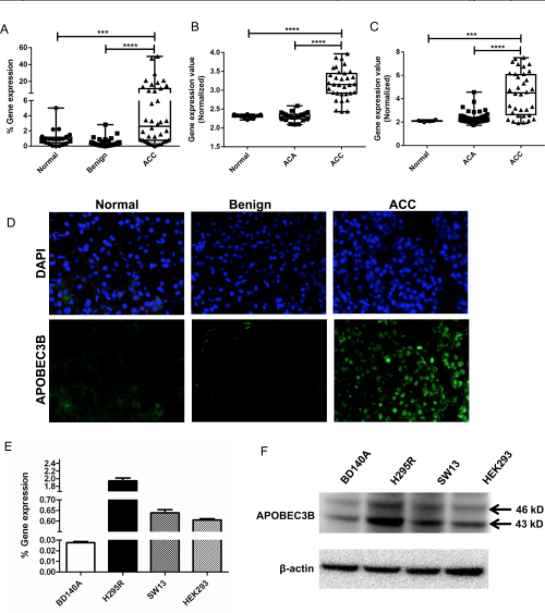Dr. Monica Varun Tyagi from the Department of Surgery and Stanford Cancer Institute discusses the research paper she co-authored that was published by Oncotarget, entitled, “GATA3 and APOBEC3B are prognostic markers in adrenocortical carcinoma and APOBEC3B is directly transcriptionally regulated by GATA3.”
Behind the Study is a series of transcribed videos from researchers elaborating on their oncology-focused studies published by Oncotarget. Visit the Oncotarget YouTube channel for more insights from outstanding authors.
—
Good morning, myself, Monica Tyagi. I am a postdoc in Department of General Surgery, School of Medicine at Stanford University. I’ll be talking about the recent publication that, well, is being accepted to be published in Oncotarget journal. It is entitled, “GATA3 and APOBEC3B are the prognostic markers in adrenocortical carcinoma and APOBEC3B is directly transcriptionally regulated by GATA3.”
Adrenocortical carcinoma it is a rare and aggressive endocrine malignancy. Given there are no well-established exogenous factors which are associated with ACC, we postulate whether APOBEC3B could be an endogenous mechanism of genomic instability, mutations in ACC and thereby we investigated its functions in vitro and in vivo.
To begin with, we analyze APOBEC3B gene expression in 21 normal adrenal cortices, 69 benign adrenal tumors and 38 around primary ACC samples. We found that the APOBEC3B mRNA, they were significantly over expressed in ACC, as we have shown figure 1A of the paper. Including that we have also analyzed two publicly available databases from GEO and EMBL for the expression of APOBEC3B and observed that in both the cohort, there was five to six fold increase in the expression of APOBEC3B in ACC, compared to the normal adrenocortical tube tissue samples, but no difference in expression between the benign and the normal ones.

Now, since APOBEC3B is known to induce DNA damage – a critical molecular event in multiple cancers – we investigated the level of Phospho-H2AX, which is an indicator of DNA double-strand break. We observed there’s a high level of Gama-H2AX in ACC as compared to the normal adrenal cortex and benign, which we have shown in figure three or the paper.
We also performed the comprehensive genomic hybridization area in the ACC cohort and analyzed the association of APOBEC3B gene expression with gene copy number. We found that ACC with a higher APOBEC3B gene expression had higher rate of chromosomal gain loss, particularly in chromosome number four and eight, as compared to the samples with lower APOBEC3B gene expression, which we have shown figure 4A.
Now, in order to decipher the mechanism by which APOBEC3B gene expression is upregulated in ACC, we analyze a copy number change, microRNA, CpG methylation data in the same ACC sample that were available in our prior studies. From there on, we went ahead to work on this current project, which we are publishing now.
We found in that study that there was no significant copy number difference, or differentially expressed microRNA that target APOBEC3B and no differential CpG methylation in the APOBEC3B promoter or enhancer. Therefore, we performed a functional knockdown screen of 92 cancer associated transcription factor and identified GATA3 as one of the key candidate as a transcription regulator of APOBEC3B gene expression, and this, we have shown in figure 5B of this paper.
TESTIMONIAL: Dr. Tyagi Describes Experience Publishing With Oncotarget
This article shows that GATA3 directly binds to the promoter region of APOBEC3B and transcriptionally regulates its gene expression in ACC. Lastly, we show that the expression level of APOBEC3B and GATA3 are prognostic markers in the patients and in ACC.
So what is the translational significance of this study? We all are aware that genetic mutations, they account for significant advancement for ACC progression and the deaminase activity of APOBEC3B enzyme is crucial contributor to somatic mutation and genomic instability. In addition, it induces detectable DNA damage and activation of DNA repair machinery.
Interestingly, high rate of TP53 mutations associate with high level of APOBEC3B in ACC, and we show that a high copy number alterations. We also demonstrate that GATA3 regulates the expression of APOBEC3B and might be a promising prognostic marker in ACC. These findings provide a novel target for ACC and prognosis of the patient, and this which we would be taking forward in future to work on and have a better perspective.
For this work, we would like to thank our funding from NIH. I would also like to thank Dr. Electron Kebebew for giving this opportunity to work on this project. Thank you so much.
Click here to read the full study published by Oncotarget.
ONCOTARGET VIDEOS: YouTube | LabTube | Oncotarget.com
—
Oncotarget is a unique platform designed to house scientific studies in a journal format that is available for anyone to read without a paywall making access more difficult. This means information that has the potential to benefit our societies from the inside out can be shared with friends, neighbors, colleagues, and other researchers, far and wide.
For media inquiries, please contact media@impactjournals.com.

